Blog: Diamant / Diamond by world-of-gems
Edelsteine / Gemstone: Diamant - Diamond
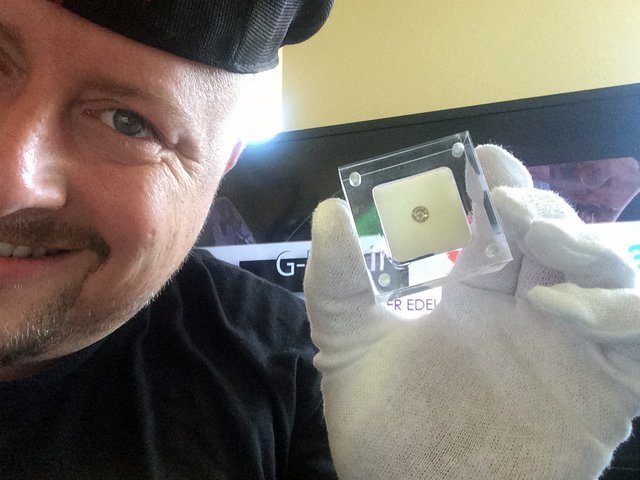
Farben: farblos, verschiedene Farben u.a. gelb in Variationen, blau, violett, grün, rot, rosa, bräunlich, gräulich, schwarz
Colors: colorless, yellow in variations, blue, purple, green, red, pink, brownish, greyish, black
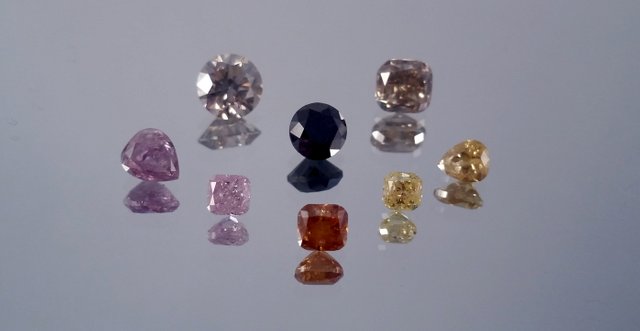
Durchschnittlicher Handelpreis in Europa:
unbehandelt weiße Diamanten:
Farbe: D, Schliff: Exzellent, Reinheit: Lupenrein, über einem Karat = 20.000 Euro/Karat,
Farbdiamanten über einem Karat (unbehandelt):
Gelb (Vivid) 100.000 Euro/Karat,
Grün (Vivid) 250.000 Euro/Karat,
Pink (Vivid) 500.000 - 1.500.000 Euro/Karat,
Blau (Vivid) 2.000.000 Euro/Karat,
Rot (Vivid) 5.000.000 Euro/Karat,
Average trading price in Europe:
untreated white diamonds:
color: D, cut: excellent, clarity: flawless, over a carat = 20.000 Euro / carat,
Fancy Color diamonds over one carat (untreated):
Yellow (Vivid) 100.000 Euro / Carat,
Green (Vivid) 250.000 Euro / Carat,
Pink (Vivid) 500.000 - 1.500.000 Euro / Carat,
Blue (Vivid) 2.000.000 Euro / Carat,
Red (Vivid) 5.000.000 Euro / Carat
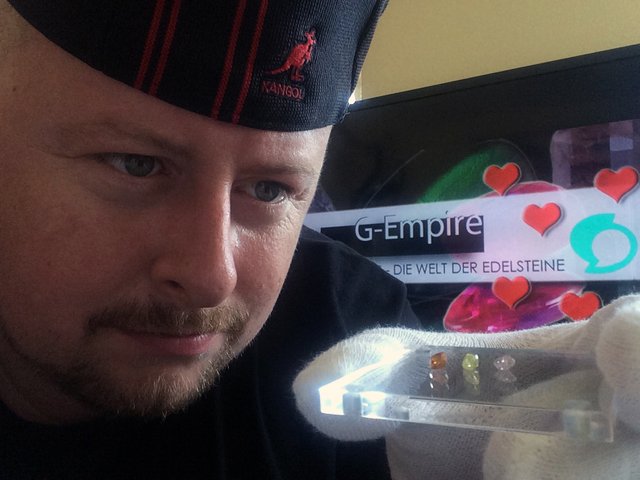
Edelsteinvorkommen
weiße Diamanten: häufig [x] selten[] sehr selten[] extrem selten[]
gelbe Diamanten: häufig [x] selten[] sehr selten[] extrem selten[]
pinke Diamanten: häufig [] selten[x] sehr selten[] extrem selten[]
grüne Diamanten: häufig [] selten[x] sehr selten[] extrem selten[]
blaue Diamanten: häufig [] selten[] sehr selten[x] extrem selten[]
orange Diamanten: häufig [] selten[] sehr selten[x] extrem selten[]
rote Diamanten: häufig [] selten[] sehr selten[] extrem selten[x]
Gemstone occurrence:
white diamonds: commonly[x] rare[] very rare[] extremly rare[]
yellow diamonds: commonly[x] rare[] very rare[] extremly rare[]
pink diamonds: commonly[] rare[x] very rare[] extremly rare[]
green diamonds: commonly[] rare[x] very rare[] extremly rare[]
blue diamonds: commonly[] rare[] very rare[x] extremly rare[]
orange diamonds: commonly[] rare[] very rare[x] extremly rare[]
red diamonds: commonly[] rare[] very rare[] extremly rare[x]
Abbaugebiete: Indien, Australien, Russland, USA, Kanada, Südafrika, Simbabwe, Sierra Leone, Namibia, Angola, Botswana
Mining areas: India, Australia, Russia, USA, Canada, South Africa, Zimbabwe, Sierra Leone, Namibia, Angola, Botswana
Berühmte Diamanten:
Der Moussaieff Red (Red Shield Diamond): ein Diamant mit 5,11 Karat in Fancy-Rot und IF-Reinheitsgrad
Der Graff Pink: ein Diamant mit 24,78 Karat in einem Fancy-Intensiv-Pink
Der Pumpkin Orange: ein Diamant mit 5,54 Karat in Fancy-Leuchtend-Orange
Der Dresdner Grüne Diamant: ein Diamant mit 41 Karat in einem natürlichem Grün
Der Wittelsbach Graff (Blaue Wittelsbacher): ein Diamant mit 31,06 Karat in einem Fancy-Tiefblau
Famous diamonds:
The Moussaieff Red (Red Shield Diamond): a 5.11 carat diamond in Fancy Red and IF clarity
The Graff Pink: a 24.78 carat diamond in a fancy intense pink
The Pumpkin Orange: a 5.54 carat diamond in fancy-bright orange
The Dresden Green Diamond: a 41 carat diamond in a natural green
The Wittelsbach Graff (Blue Wittelsbacher): a 31.06 carat diamond in a fancy deep blue
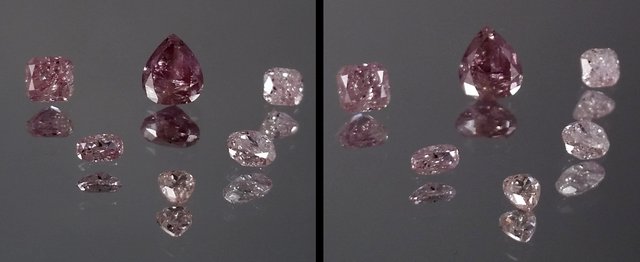
Der Diamant zählt neben dem Saphir, Rubin und Smaragd zu den großen Vier Edelsteinen.
Mit Mohshärte 10 ist der Diamant der härteste aller bekannten Edelsteine und besteht aus 100% Kohlenstoff.
Im Jahr 2012 lag die Weltproduktion an Rohdiamanten bei 127 Millionen Karat,
welches ein Rückgang um fast 50 Millionen Karat gegenüber dem Rekordjahr 2006 (176 Millionen Karat) war.
Zum Vergleich, im Jahr 2011 lag die Weltproduktion an synthetischen Diamanten bei circa 4,5 Milliarden Karat.
Die Qualitätskriterien sind genau definiert und werden durch die 4C's beschrieben.
Dabei wird der Schliff (cut), Reinheit (clarity), Gewicht (carat weight) und Farbe (colour) jedes Diamanten eingestuft.
In Australien haben Forscher die ältesten Diamanten (eingeschlossen in das Mineral Zirkon) gefunden, diese stammen aus der Frühgeschichte der Erde
und werden auf ein Alter von circa 4,3 Milliarden Jahre datiert.
In der Menschheitsgeschichte werden Diamanten erstmals 4000 v.Chr. in Tempeln und Schriften erwähnt.
Dort sollen indische Priester goldene Schilde mit Diamanten getragen haben.
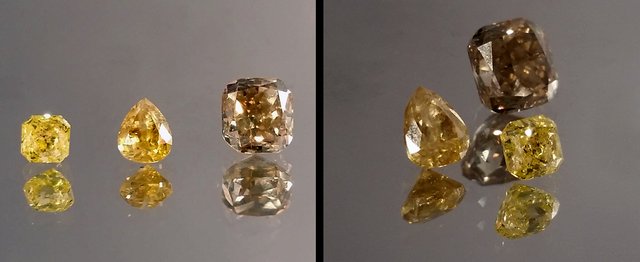
The diamond is one of the "big four" jewels in the world. The others are sapphire, ruby and emerald.
With Mohs hardness 10, the diamond is the hardest of all known gemstones and consists of 100% carbon.
In 2012, world production of rough diamonds was 127 million carats
which was a decline of nearly 50 million carats compared to the record year 2006 (176 million carats).
For comparison, in 2011, the world production of synthetic diamonds was about 4.5 billion carats.
The quality criteria are well defined and are described by the 4C's.
Here, the cut, clarity, carat weight and color of each diamond are classified.
In Australia, researchers have found the oldest diamonds (included in the mineral zircon), which are from the early history of the earth and are dated to an age of approximately 4.3 billion years.
In human history, diamonds were first discovered in 4000 BC. mentioned in temples and scriptures.
There, Indian priests are said to have worn gold shields with diamonds.
Hier mein Video dazu / Here is my video
Danke für Euer Interesse...
Thanks for your interest...
Glückwunsch! Schöne Sammlung.
Danke... ich freue mich wirklich das es Dir gefällt...
Glückwunsch! :)
Dann sollte das hier auch sehr interessant für dich sein:
https://steemit.com/bitcoin/@fux/was-ist-cryptogold-passives-einkommen-generieren
lg
ich schaue es mir an...
Super! :-)
Congratulations @world-of-gems! You have completed some achievement on Steemit and have been rewarded with new badge(s) :
Click on the badge to view your Board of Honor.
If you no longer want to receive notifications, reply to this comment with the word
STOPTo support your work, I also upvoted your post!
Do not miss the last post from @steemitboard!
Participate in the SteemitBoard World Cup Contest!
Collect World Cup badges and win free SBD
Support the Gold Sponsors of the contest: @good-karma and @lukestokes